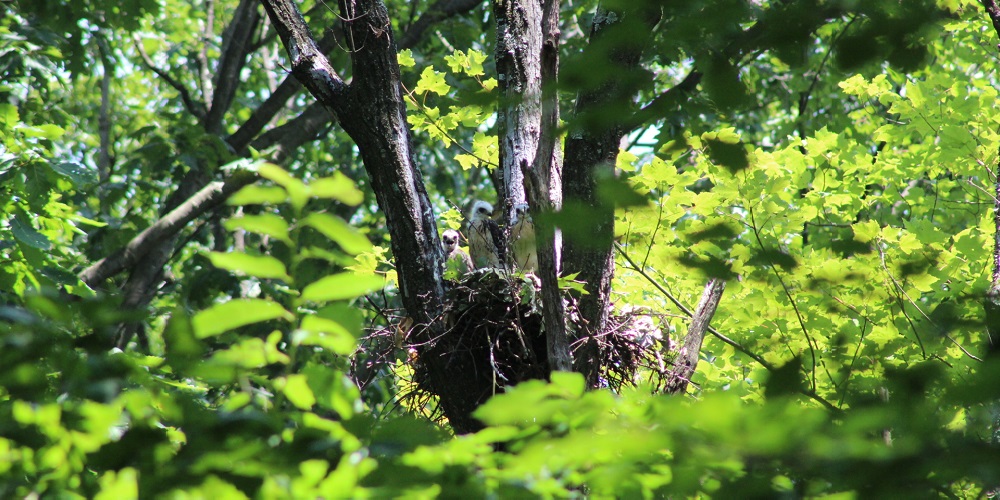
Photos courtesy of Mary Linkevich (nest) and Rebecca McCabe (birds in-hand)
In June 2018, Hawk Mountain tagged two adult male Broad-winged Hawks with 5-gram satellite transmitters with the hope of learning more about their movement ecology. Although we have tagged female broadwings every year since 2014, this was the first time a male was tagged. Support for our 2018 work was provided by the Kittatinny Coalition and several private donors. A State Wildlife Grant, matched with funds from the Kittatinny Coalition and other partners, supported the initial broadwing research from 2014-2017.
Brady, the first male, was tagged at the base of Hawk Mountain at the same nest site that a female was tagged in 2015, Ridgena. His map is shown below and can be compared to Ridgena’s summer movements, his mate. Both seem to be using the same range and both took long flights over farmland to visit forests on the west side of route 61, which is interesting.
Broun, our second male, was tagged on the Kittatinny Ridge north of Shartlesville on private land. Broun was first banded in 2014 when Hawk Mountain satellite-tagged one of his chicks, Kit, also sponsored by the Coalition. We retrapped Broun this year and put a satellite transmitter on him in addition to his bands. His range is shown in the map below and included both sides of the Ridge. Kit, his offspring from a few years ago, seemed to remain mostly on the south slope in her pre-migration movements.

Brady and Ridgena produced two young successfully in 2018 from their nest site in a white pine tree. Both young are hanging around the nest while parents return with food periodically. Broun and his unbanded mate produced three young this year successfully, nesting in a chestnut oak tree on private land. They have produced two young per year annually since 2014, and this year had three young (nest in photo).
Both Brady and Broun’s units stopped signalling because the solar units were not getting enough sun in the forest. We suspect the panel is so small that with the amount of time the birds spend in the forest it is not recouping enough energy to restart the signals. We are hoping that when the birds start soaring in the next few weeks and migrating that the units will kick back on. These units have been used for a few years by other researchers, but more on shorebirds and birds living in sunny areas.
This winter we are going to look around for a different type of unit that might not need solar recharging and yet is small enough for a male to carry. The female units we have used for several years had larger batteries (and were thus heavier, 9 g) and seemed to better sustain their signal despite many days in the forest.
No matter what happens we have collected some interesting and important movement data from the two males already! To follow the two males’ movements along with two females who are still signalling from two years ago, log into www.hawkmountain.org/birdtracker

